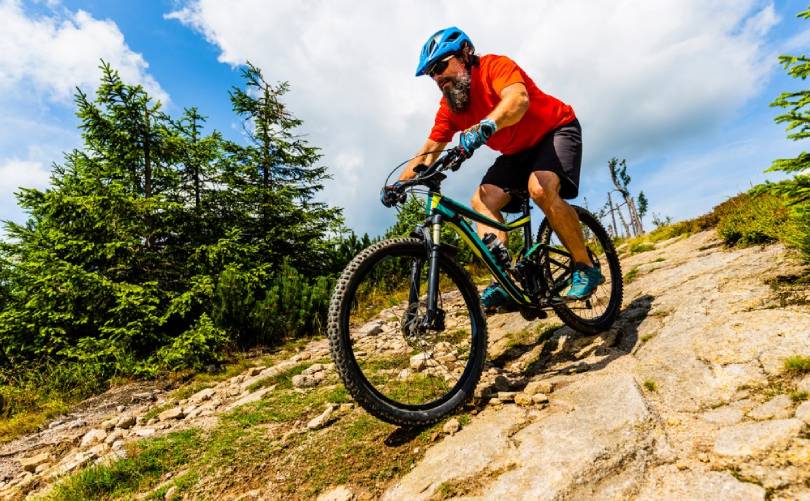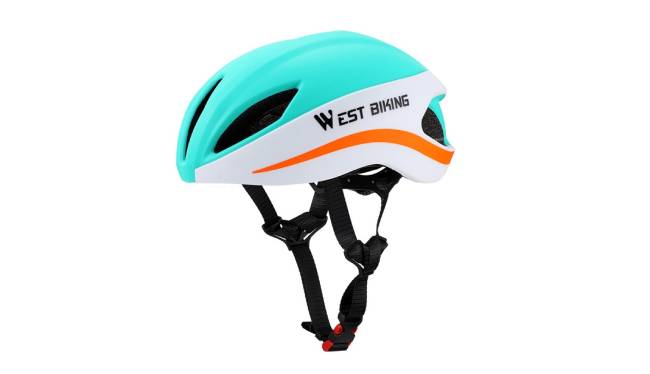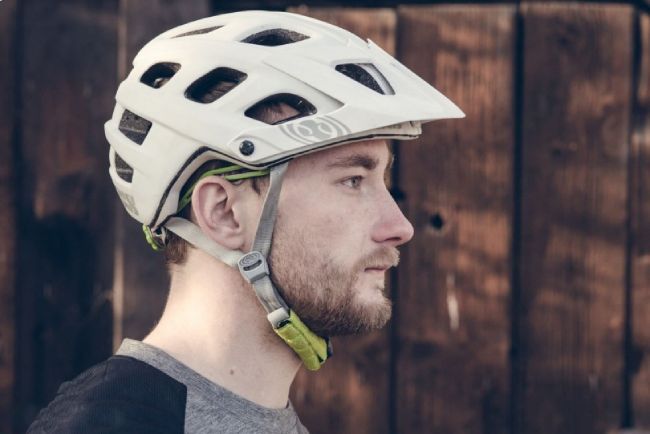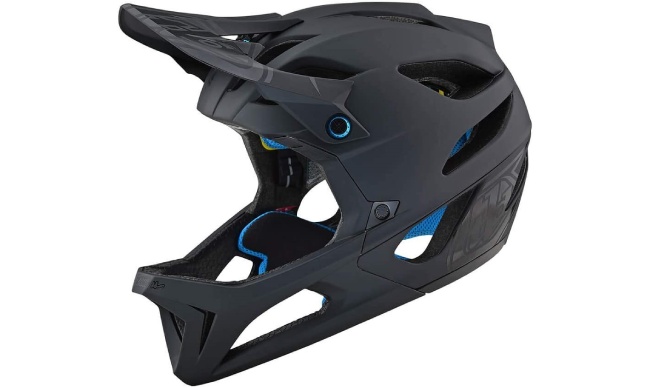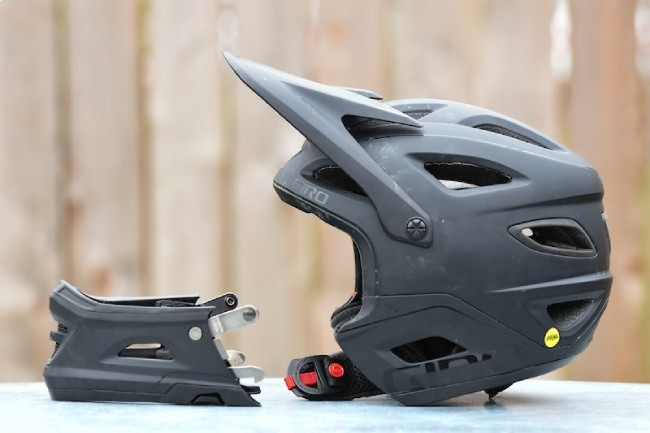The primary reason your mountain bike has visors is to protect your face from external damages. Sun may cause you to go blind, tree branches can cut your skin, wind/rain can decrease your visibility, and dirt can damage the integrity of your skin.
Visors are there to protect you from all that and more. Today we’re talking about all the reasons you need a helmet with visors for your mountain bike. Without any further ado, let’s get started.
Why Do Mountain Bike Helmets Have Visors
They are attached with MTB helmets to protect your face, especially eyes from sun, dirt, branches, crashes, and other objects.
1) Protection from sunlight and sunburn
Imagine on a cloudy afternoon, you are riding on a narrow and rough surface of a mountain where you need a clear vision and focus, suddenly the sun is at your eye level!
What will happen?
Your sight will be blocked and an unwanted accident may happen.
See, you cannot ride towards the sun’s direction without a visor or glasses. Your vision will be unclear and it will hamper your eyes in the long run.
Again, visors also protect your skin from direct sunlight. Sunburn is a serious issue, it damages the skin and creates irritations.
2) Safety from tree branches
You might be an expert at traversing branches and even trees but moving them with one hand while handling the bike with another is not common because doing so will be dangerous on a single track.
Also ducking is not your option. So the visor is there to save from the overhanging branches.
3) Shield for rain and wind
Similarly your eyes need protection from rain and heavy wind while riding. Why? For the same reason you want to block the sunlight!
It is going to be difficult for you to keep your eyes open when it’s pouring or snowing outside. Heavy wind also has the same effect.
With a visor on, you are going to enjoy your ride in rough weather.
4) Secure eyes from flying particles/sand
Harmful objects floating around the air is a very common scenario because of the pollution.
When you are riding fiercely and hitting the air at the same speed, a small piece of dust can be fatal for your eyes.
In these circumstances if you close your eyes suddenly on a single track that can be deadly.
So we will suggest that you wear a helmet with a visor.
5) Protects during crashes
High quality helmet with a visor is designed to protect your face, eyes, and head.
Even if your bike crashes, the helmet will get broken before your face, eyes, nose, teeth, brain, and skull get injured.
So it’s very clear that they will absorb the first shock coming to you. In fact if you look more closely, they reduce the gravity of head injuries.
6) Dirt
While racing on the mountain, your front rider may spill dirt in the rainy/summer season and snow in winter.
So our advice is to have your visor on!
Styles and Shapes of Visor
1) Permanently attached Visor
They are attached with helmets and you cannot remove them. Additionally, they are shorter than removable visors.
Well, these types protect you from sun and rain. We will say, they are a very good option for those who love to roam around the mountain on occasion.
However, do not choose them if you are a single track racer. They are not designed to protect your face and head from injury.
2) Replaceable
Helmets with replaceable visors are versatile in style and you can choose according to your needs.
Best feature of this helmet is, you can remove them and re-attach them whenever you want, though we insist you to wear them all the time while riding if you are a single track racer.
Moreover, they will provide ultimate protection from branches and dirt.
Best Visor Length for Optimum Protection
Here are two situations. Longer visor is better to protect from sunlight and tree branches.
On the other hand, they narrow down your vision, so you will have difficulties while climbing the mountain.
Now you choose according to your situation!
Types of Mountain Bike Helmet
1. Half shell/XC
At a first glance you may consider them as a simple road bike helmet but they are used for non-aggressive cross country and trail riding.
Their open lids are heavier in the back to protect the head from backward falls. Not to mention they have visors too.
2. Open face enduro
They are more protective than the xc and preferable for more aggressive one-track riding.
3. Full face enduro
They offer a better ventilation system than typical full face helmets.
Besides they will give optimum protection to your face, chin as well as head.
4. Convertable enduro
You are able to convert them from half face to full face. They will provide full safety on downhill riding and comfort for climbing hills.
5. All around/combat helmets
These stylish headwear look like skateboarding helmets but are heavier.
Is using a visor necessary all the time?
This depends on the track you are riding on. For example, if you are climbing or downhill riding or racing then you should wear it for your own safety. We’ve already mentioned what may happen if you don’t!
Now if you are in traffic or in a neighborhood you can avoid them because they narrow your vision and you may have difficulties measuring other transport’s gap from you.
Can you just wear glasses instead of a visor?
Many riders wear glasses to avoid sun, rain and mud.
However, we will suggest you not to wear glasses on downhill riding and climbing because they won’t be strong enough to protect you from branches and accidents.
Special Note: Find the best fit helmet and visor according to your face. We suggest trying them before you purchase.
Your helmet should do its job well and a great fit is a must for that purpose
Now, how will you understand that you’ve got your perfect fit?
Well, it’s pretty simple. Wear them and now move your head. Is your helmet moving? Do you feel any discomfort? If the answer is no then you got your match! Congratulations.
FAQs
1) Why do road bike helmets not have visors?
Ans: Your face does not need protection from harmful objects because there are no branches or rough single track like mountains in an open road.
In fact they block the vision which eventually slows down a rider. Road cyclists are faster and they need a clear vision of their surroundings to make sudden moves.
So clearly a visor creates more obstacles than ease. Now you may think, what about sunlights and air pollution? Well, buy sunglasses or a cycling cap.
2) Why are MTB helmets different?
Ans: They are different because they face unique obstacles in the mountain that you won’t face in the roads.
For example, the lower cut and back of a MTB helmet is different (Heavier than other helmets) to protect your head if you fall while downhill riding or climbing.
Again they have a visor to protect your eyes and face from tree branches, flying harmful particles, sunlight, rain and snow.

